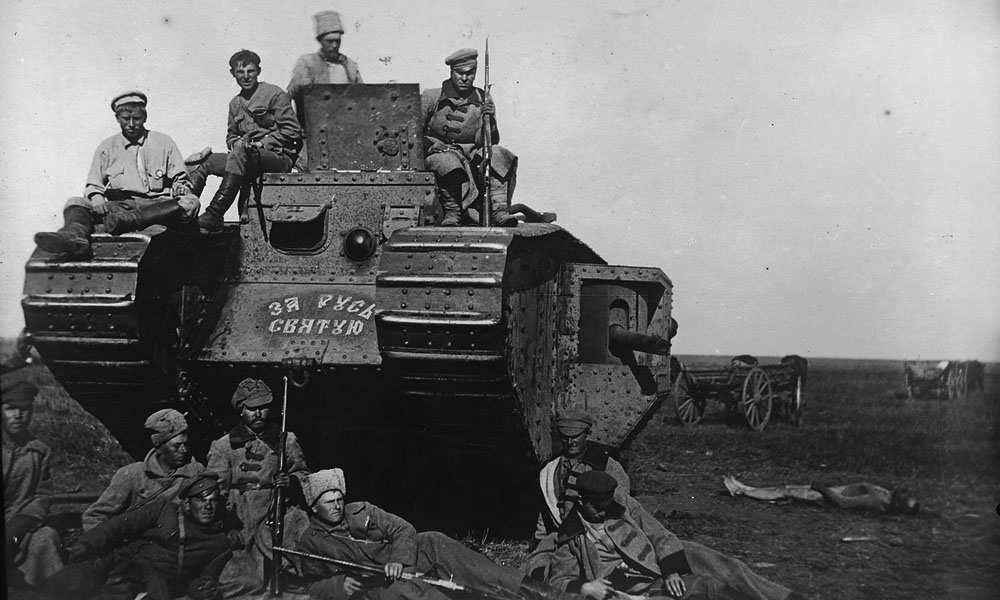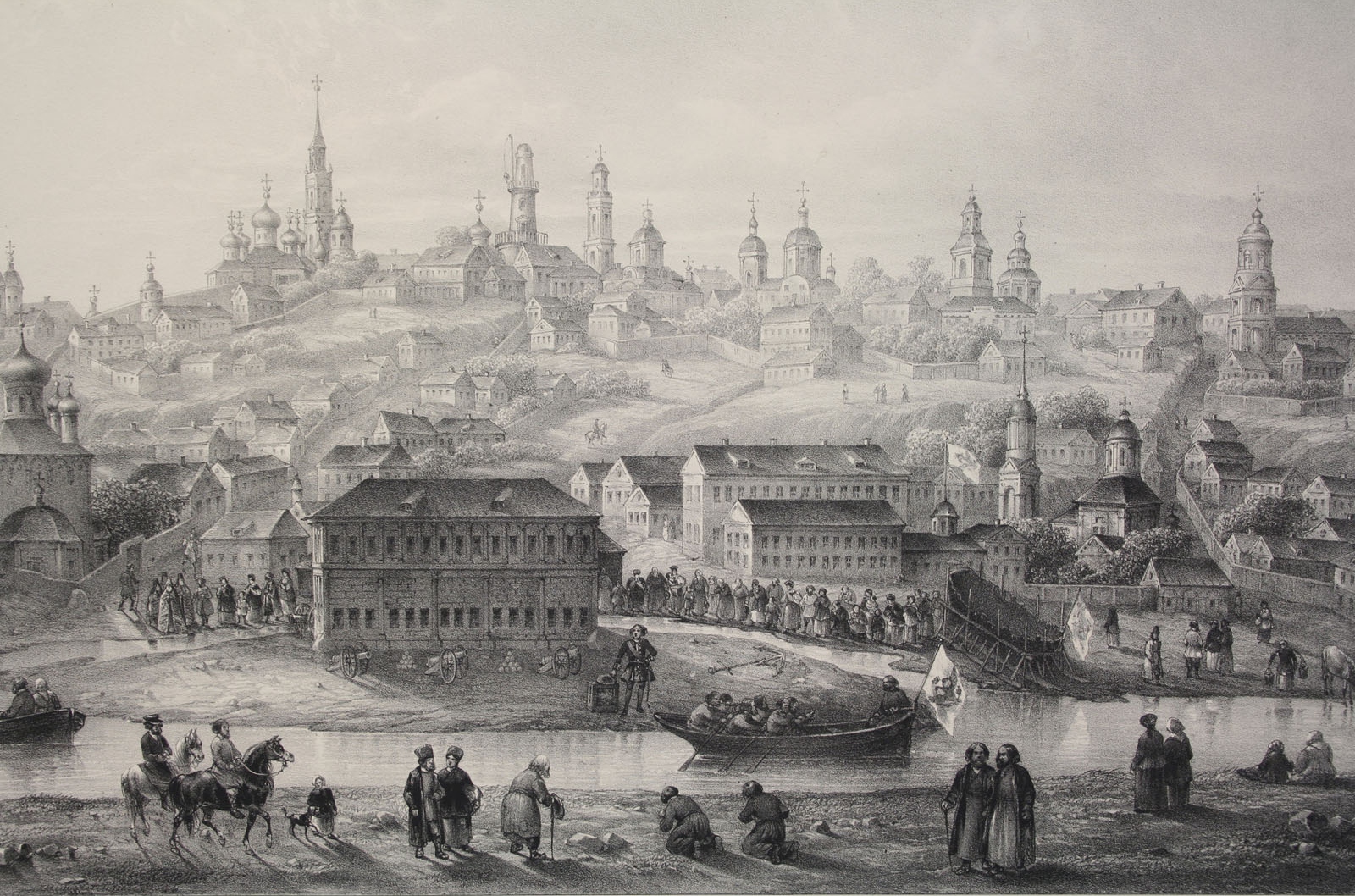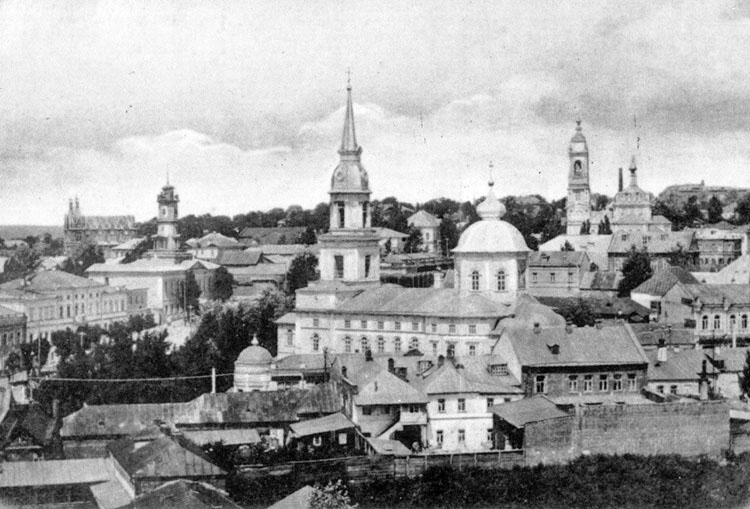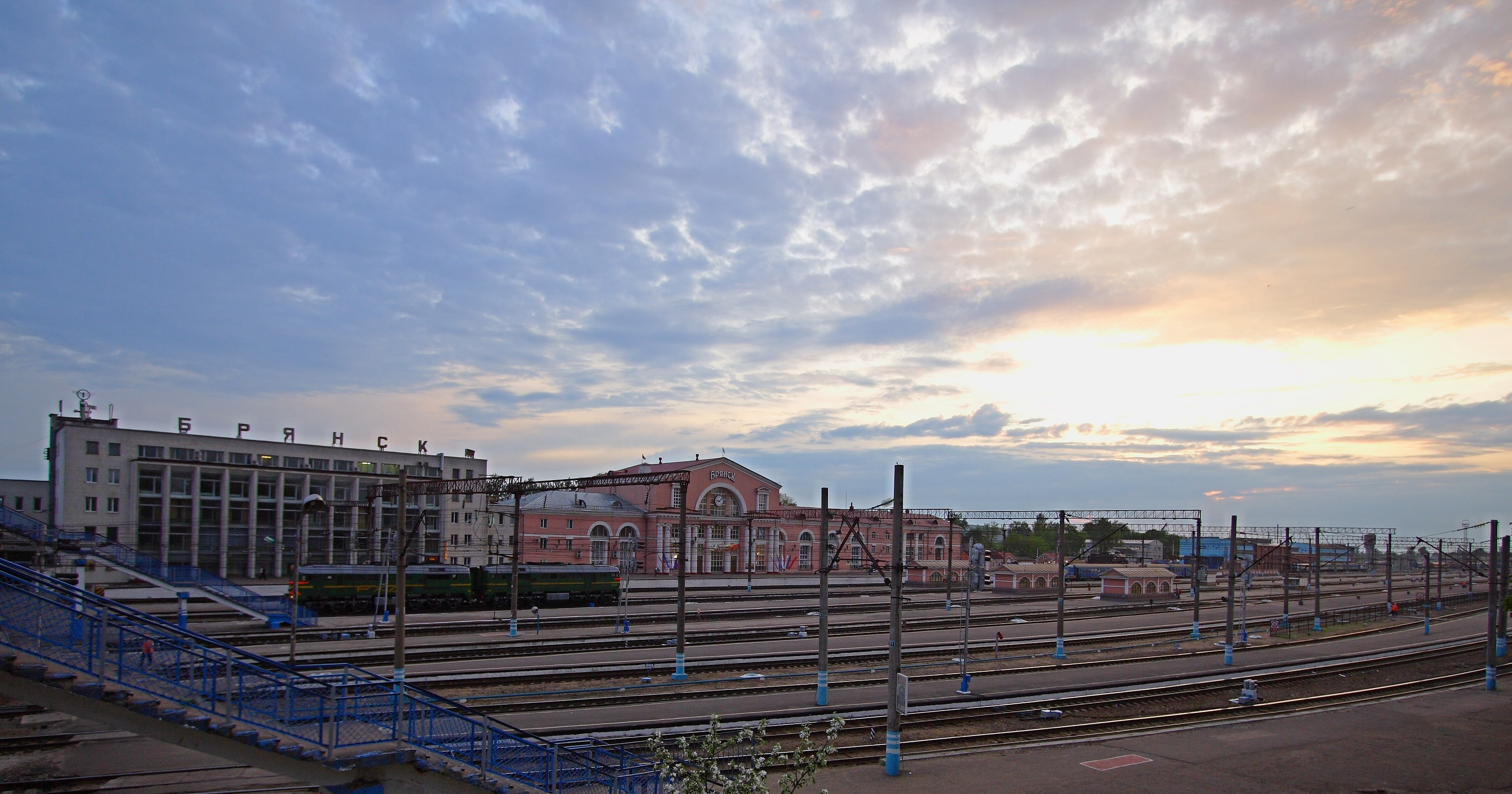|
Southern Front (RSFSR)
The Southern Front () was a Front (military formation), front of the Red Army during the Russian Civil War, formed twice. The front was first formed in September 1918, fighting against the White movement, White Don Cossacks and the Volunteer Army in southeastern Russia. It advanced into the North Caucasus in January 1919, but was forced to retreat from eastern Ukraine by an attack of the Armed Forces of South Russia (AFSR) in May and June. The Southern Front then retreated in the face of the latter's Advance on Moscow (1919), Moscow offensive, launching a counterattack in August that advanced into northeastern Ukraine and to the Don River (Russia), Don River. With its rear disrupted by White cavalry raids, the front retreated north in September and early October, moving as far as Oryol, Orel. In October the front launched a counteroffensive, defeating the AFSR, leading to the latter's precipitate retreat to the Black Sea by early January. The front was redesignated the Southwestern ... [...More Info...] [...Related Items...] OR: [Wikipedia] [Google] [Baidu] |
Russian Soviet Federative Socialist Republic
The Russian Soviet Federative Socialist Republic (Russian SFSR or RSFSR), previously known as the Russian Socialist Federative Soviet Republic and the Russian Soviet Republic, and unofficially as Soviet Russia,Declaration of Rights of the laboring and exploited people, article I. was a socialist state from 1917 to 1922, and afterwards the largest and most populous Republics of the Soviet Union, constituent republic of the Soviet Union (USSR) from 1922 to 1991, until becoming a Declaration of State Sovereignty of the Russian SFSR, sovereign part of the Soviet Union with priority of Russian laws over Union-level legislation in 1990 and 1991, the last two years of the existence of the USSR.The Free Dictionary Russian Soviet Federated Socialist Republic< ... [...More Info...] [...Related Items...] OR: [Wikipedia] [Google] [Baidu] |
Russian Army (1920)
The Russian Army (), commonly known as the Army of Wrangel (), was a White Army active in South Russia during the Russian Civil War from March to November 1920. It was officially formed on 28 April 1920 from the merger of several White armies, including the Volunteer Army, in a reorganization of the Armed Forces of South Russia. The Army of Wrangel, nicknamed after its commander General Pyotr Wrangel, fought against Bolshevik forces in the Southern Front and the Ukrainian War of Independence. In November 1920, following defeat at the Siege of Perekop and being vastly outnumbered, the Army of Wrangel organized a successful evacuation from Crimea and subsequently dissolved. Veterans of the army were among the founders of the Russian All-Military Union. Composition The Russian Army had a staff and five Army Corps Corps (; plural ''corps'' ; from French , from the Latin "body") is a term used for several different kinds of organization. A military innovation by Napoleon I, ... [...More Info...] [...Related Items...] OR: [Wikipedia] [Google] [Baidu] |
Red Army Of The North Caucasus
The 11th Army was a field army of the Red Army during the Russian Civil War, which fought on the Caspian-Caucasian Front. It took a prominent part in the sovietization of the three republics of the southern Caucasus in 1920–21, when Azerbaijan, Armenia, and Georgia were brought within the orbit of Soviet Russia. Russian Civil War Since the Russian Republic's Caucasus Front (April 1917 - March 1918) dissolved, it did not have a true successor organization. The Army of the North Caucasus, which was renamed 11th Army on October 3, 1918, constituted the main army of the Russian Soviet Federative Socialist Republic in the area during the Russian Civil War. During the Russian Civil War the 11th Army fought against the White troops of General Anton Denikin's Volunteer Army in the western part of the North Caucasus. It was the main strength of the Caspian-Caucasian Army Group. In January 1919, the front of 200 miles held by the Red troops along the Caucasus foothills and South Russia ... [...More Info...] [...Related Items...] OR: [Wikipedia] [Google] [Baidu] |
Kamyshin
Kamyshin ( rus, Камышин, p=kɐˈmɨʂɨn) is a city in Volgograd Oblast, Russia, located on the right bank of the Volgograd Reservoir of the Volga River, in the estuary of the Kamyshinka River. Its population was Past populations for Kamyshin include History It was founded in 1667 on the left bank of the Kamyshinka River. In 1710, all of its inhabitants were relocated to the fortress of Dmitriyevsk () on the opposite bank of the river. In 1780, the name was changed to Kamyshin and it was granted town status. In the 19th century, Kamyshin turned into a merchant city with sawmills and windmills. It was formerly famous for its watermelon trade. Portage between the Volga and Don Rivers Near Kamyshin, the Volga is quite close——to the upper reaches of the Ilovlya River, the tributary of the Don. The distance between the sources of the Kamyshinka River, the tributary of the Volga, and the Ilovlya is only a little more than . In this place in ancient times there exis ... [...More Info...] [...Related Items...] OR: [Wikipedia] [Google] [Baidu] |
Balashov (town)
Balashov () is a town in Saratov Oblast, Russia, located on the Khopyor River. Population: It was previously known as ''Balashovo'' (until 1780). History It has been known as the '' selo'' of Balashovo () since the end of the 18th century. In 1780, it was granted town status and became known as Balashov. Between 1954 and 1957, it was the capital of the Balashov Oblast of Russian SFSR. Administrative and municipal status Within the framework of administrative divisions, Balashov serves as the administrative center of Balashovsky District, even though it is not a part of it. As an administrative division, it is incorporated separately as Balashov Town Under Oblast Jurisdiction—an administrative unit with the status equal to that of the districts. As a municipal division, Balashov Town Under Oblast Jurisdiction is incorporated within Balashovsky Municipal District as Balashov Urban Settlement.Law #101-ZSO Military It was home to the Balashov air base. Geography The tow ... [...More Info...] [...Related Items...] OR: [Wikipedia] [Google] [Baidu] |
Povorino
Povorino () is a town and the administrative center of Povorinsky District in the east of Voronezh Oblast, Russia. Population: History It emerged as a settlement around the eponymous railway station in 1870 and was granted town status in 1954.Official website of Povorino Administrative and municipal status Within the framework of administrative divisions, Povorino serves as the of Povorinsky District ...[...More Info...] [...Related Items...] OR: [Wikipedia] [Google] [Baidu] |
Voronezh
Voronezh ( ; , ) is a city and the administrative centre of Voronezh Oblast in southwestern Russia straddling the Voronezh River, located from where it flows into the Don River. The city sits on the Southeastern Railway, which connects western Russia with the Urals and Siberia, the Caucasus and Ukraine, and the M4 highway (Moscow–Voronezh– Rostov-on-Don– Novorossiysk). In recent years the city has experienced rapid population growth, rising in 2021 to 1,057,681, up from 889,680 recorded in the 2010 Census, making it the 14th-most populous city in the country. History Foundation and name The first chronicle references to the word "Voronezh" are dated 1177, when the Ryazan prince Yaropolk, having lost the battle, fled "to Voronozh" and there was moving "from town to town". Modern data of archeology and history interpret Voronezh as a geographical region, which included the Voronezh river (tributary of the Don) and a number of settlements. In the lower rea ... [...More Info...] [...Related Items...] OR: [Wikipedia] [Google] [Baidu] |
Kursk
Kursk (, ) is a types of inhabited localities in Russia, city and the administrative center of Kursk Oblast, Russia, located at the confluence of the Kur (Kursk Oblast), Kur, Tuskar, and Seym (river), Seym rivers. It has a population of Kursk is the oldest city in the oblast, recorded in 1032 as part of the Kievan Rus'. It became the seat of a small eponymous principality in the 13th century, before passing to Grand Duchy of Lithuania, Lithuanian rule in the Late Middle Ages, late medieval period, and then to Grand Duchy of Moscow, Moscow in the early modern period. Kursk has served as the seat of regional administration since 1779. The area around Kursk was the site of a turning point in the Soviet–German struggle during World War II and the site of the Battle of Kursk, single largest battle in history. Geography Urban layout Kursk was originally built as a fortress city on a hill dominating the plain. The settlement was surrounded on three sides by the Kur (Kursk Oblast), K ... [...More Info...] [...Related Items...] OR: [Wikipedia] [Google] [Baidu] |
Bryansk
Bryansk (, ) is a types of inhabited localities in Russia, city and the administrative center of Bryansk Oblast, Russia, situated on the Desna (river), Desna River, southwest of Moscow. It has a population of 379,152 at the 2021 census. Bryansk is one of the oldest cities in the oblast, with 985 regarded as the year of foundation. It was part of the Kievan Rus', Mongol Empire and Grand Duchy of Lithuania, Lithuania during the Middle Ages, medieval period, then was contested by Grand Duchy of Moscow, Moscow and Polish–Lithuanian Commonwealth, Poland–Lithuania in the early modern period, before ultimately passing to Russia, within which it was a major regional trading center. History Medieval period Based on excavations at the end of the 20th century, information was found on the birth of the city in the 10th century on the Chashin Kurgan. For ease of perception, the conventional date of birth was chosen as 985 AD. The first written mention of Bryansk, as Debryansk, dates t ... [...More Info...] [...Related Items...] OR: [Wikipedia] [Google] [Baidu] |
Pavel Sytin
Pavel Pavlovich Sytin () (30 July .S. 18 July1870 Skopin – 22 August 1938 Moscow) was a Russian and Soviet military leader who reached the rank of major general in the Imperial Russian Army. He fought in the Russo-Japanese War and World War I. Biography Early life Sytin was born in Skopin in the Russian Empire's Ryazan Governorate on 30 July ( O.S. 18 July) 1870, the son of a rider in a lancer regiment who had been promoted to a position as an official in a military department. He graduated from the Kiev Cadet School (later the Kiev Military School) in 1892. Imperial Russian Army Upon graduation from the Kiev Cadet School in 1892, Sytin began his Imperial Russian Army career. He graduated from the Nikolayev Academy of the General Staff in 1899 in the first category. He took part in the Russo-Japanese War of 1904–1905. From 1908 to 1909 he was the head of the combat department of the headquarters of the Brest-Litoŭsk Fortress. In 1909, he became an instructor at a milit ... [...More Info...] [...Related Items...] OR: [Wikipedia] [Google] [Baidu] |
Curtain Forces
Curtain forces () were military forces, created soon after the signing of the Treaty of Brest-Litovsk by Soviet Russia in 1918, to protect the inner regions of the state and initially served as border troops. They were created by the directive No.72 of Higher Military Council on March 5, 1918. History The Curtain was a defense system created according to the March 5, 1918 directive of the Revolutionary Military Council to guard "the interior regions of the state against possible invasion of Germans" and for guarding the demarcation line established by the Brest Peace Treaty. It was composed of groups of military forces that were organized on a voluntary basis. The Russian Army officers developed the concept of the Curtain during its efforts to defend Petrograd against the February 1918 German offensive initiated by Erich Ludendorff. The Curtain was deployed during the period marked by the collapse of the former Imperial Russian Army and the Red Army was just being formed. After in ... [...More Info...] [...Related Items...] OR: [Wikipedia] [Google] [Baidu] |
Revolutionary Military Council
The Revolutionary Military Council (), sometimes called the Revolutionary War Council Brian PearceIntroductionto Fyodor Raskolnikov s "Tales of Sub-lieutenant Ilyin." or ''Revvoyensoviet'' (), was the supreme military authority of Soviet Russia and later the Soviet Union. It was instituted on September 2, 1918, by decree of the All-Russian Central Executive Committee (VTsIK), known as the "Decree Declaring the Soviet Republic Military Camp". Prior to ''Revvoyensoviet'', the two main military authorities had been the Supreme Military Council (, ') and the operations division of the People's Commissariat on War and Navy Affairs. The decree put all fronts and military organizations under the command of the chairman of ''Revvoyensoviet'', with a commander-in-chief second-in-line to the chairman to lead strategic and military operations stateside. The chairman was appointed by VTsIK on to serve as People's Commissar (or ''narkom'') of War and Navy Affairs. The first chairm ... [...More Info...] [...Related Items...] OR: [Wikipedia] [Google] [Baidu] |





